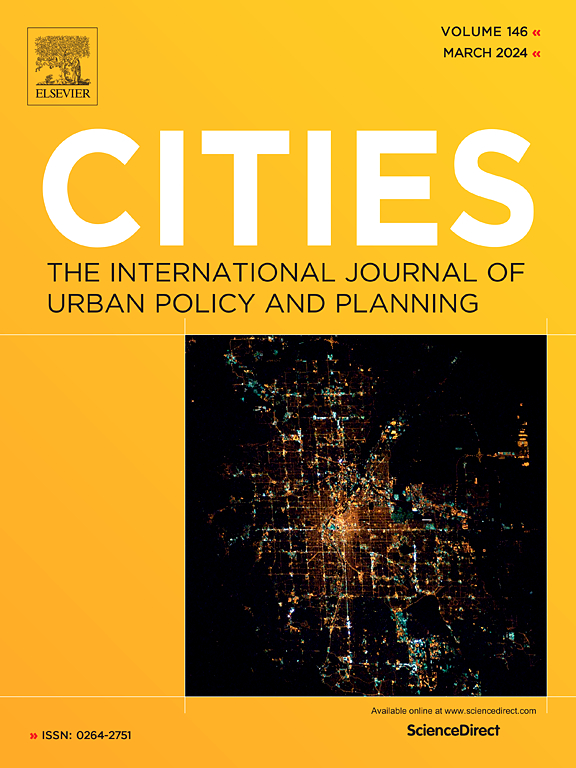建筑环境对美国家庭旅行的不同影响--36 个不同地区和机器学习的最新情况
IF 6
1区 经济学
Q1 URBAN STUDIES
引用次数: 0
摘要
人们的日常出行行为会对气候变化、公共健康和社会公平等问题产生深远影响。本研究利用一个大型(100,000 个家庭的 100 万次出行)、地理精确(家庭 XY 坐标)、多区域(36 个区域)数据集和机器学习分析(提升回归树,BRT),填补了有关建筑环境对出行行为影响的文献空白。BRT 模型分两个阶段对家庭 VMT、步行、骑自行车和公交使用情况进行估算。结果显示,在所有模式选择模型中,建筑环境的影响都超过了社会经济的影响,而且在出行生成模型中也很显著。在所有估计模型中,建筑密度和公交距离是影响最大的建筑环境变量。在所有因变量中都发现了非线性效应和阈值效应,这表明了在规划中的关键应用。提供了最大限度减少 VMT 和最大限度增加积极出行和公交使用的建议值。本文章由计算机程序翻译,如有差异,请以英文原文为准。
Varying influences of the built environment on household travel in the United States – An update with 36 diverse regions and machine learning
People's daily travel behavior can have far-reaching impacts on issues ranging from climate change and public health to social equity. This study addresses a gap in the literature regarding the effects of built environments on travel behavior using a large (one million trips from 100,000 households), geographically precise (household XY coordinates), and multiregional (36 regions) dataset and machine learning analysis (boosted regression trees, BRT). BRT models were estimated in two stages for household VMT, walking, bicycling, and transit usage. The results show the built environment outweighs the impact of socioeconomics in all mode choice models and were significant in the trip generation models as well. Density and distance to transit were the most consistently influential built environment variables across the models estimated. Nonlinear and threshold effects were found for all dependent variables, suggesting key applications for planning. Suggested values are provided for minimizing VMT and maximizing active travel and transit usage.
求助全文
通过发布文献求助,成功后即可免费获取论文全文。
去求助
来源期刊

Cities
URBAN STUDIES-
CiteScore
11.20
自引率
9.00%
发文量
517
期刊介绍:
Cities offers a comprehensive range of articles on all aspects of urban policy. It provides an international and interdisciplinary platform for the exchange of ideas and information between urban planners and policy makers from national and local government, non-government organizations, academia and consultancy. The primary aims of the journal are to analyse and assess past and present urban development and management as a reflection of effective, ineffective and non-existent planning policies; and the promotion of the implementation of appropriate urban policies in both the developed and the developing world.
 求助内容:
求助内容: 应助结果提醒方式:
应助结果提醒方式:


